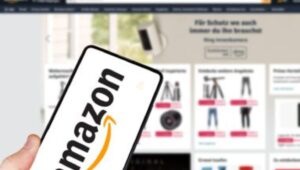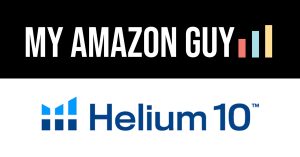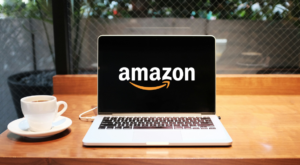Building a successful business on Amazon doesn’t stop at creating great products or optimizing listings—it hinges on protecting your brand on Amazon. Amazon Brand Protection is essential for safeguarding your hard-earned reputation and ensuring that customers associate your brand with quality and trust.
The reality is, the Amazon marketplace is rife with threats that can undermine your brand’s success. From counterfeit products to unauthorized sellers, brand dilution, and fake reviews, these challenges require a proactive approach to combat.
Knowing how to protect your brand is not just a smart move—it’s a necessity. In this guide, we’ll explore everything there is to know about Amazon Brand Protection. From identifying key threats to leveraging Amazon’s tools and strategies, you’ll learn how to safeguard your brand and set the stage for long-term success.
Table of Contents
What Is Amazon Brand Protection?
Amazon Brand Protection refers to the strategies and tools that brand owners use to safeguard their intellectual property and presence on the Amazon marketplace. It ensures that only authorized sellers can list and sell products under your brand name.
This process involves defending against threats like counterfeit products, listing hijackers, and trademark violations. By maintaining control, you protect your brand’s reputation and build customer trust.
Amazon offers several tools, like Brand Registry, to help businesses take charge of their brand protection efforts. These measures are essential for ensuring a positive customer experience and preserving your market share.
Importance of Amazon Brand Protection
Amazon’s massive marketplace offers sellers unparalleled access to millions of shoppers, but this visibility comes with unique risks. The same platform that fuels your brand’s growth also attracts counterfeiters, unauthorized sellers, and competitors looking to exploit your success.
Here’s why Amazon Brand Protection is essential for sellers, big or small:
Protecting your brand ensures customers receive the high-quality products they expect. Without safeguards, counterfeiters and hijackers can damage your reputation and erode trust.
Unprotected brands risk losing sales to bad actors while facing potential legal battles due to intellectual property theft.
Amazon’s ease of entry makes it simple for counterfeiters and unauthorized sellers to create fake listings, undercut your prices, or replicate your product designs.
Even legitimate competitors can target your niche, copy your branding, and use your keywords to steal customers. Brand protection ensures your market position stays strong.
8 Common Threats to Your Amazon Brand
There are many ways an Amazon brand can be harmed, from counterfeit products to unscrupulous competitors. These threats can damage your reputation, erode customer trust, and impact your bottom line without proper precautions.
Below are the most common threats to your Amazon brand:
1. Counterfeit Products
Counterfeit products are fake items sold under your brand name by unauthorized sellers. These items are inferior imitations, intentionally designed to deceive customers into thinking they are purchasing your genuine product.
Counterfeiters damage your brand reputation by delivering poor-quality goods that fail to meet customer expectations, leading to negative reviews and a loss of trust.
2. Intellectual Property Theft
Intellectual property theft occurs when other sellers copy your designs, branding, or content to create lookalike products. These imitations capitalize on your creativity and compete unfairly without claiming to be exact replicas.
Unlike counterfeit products, IP theft focuses on stealing your ideas rather than passing off fake items as your brand. This undermines your originality, confuses customers, and harms your competitive edge on Amazon.
3. Listing Hijackers
Listing hijackers are sellers who infiltrate your Amazon product listing to sell their own inventory, which could be your product, a counterfeit, or a lower-quality substitute. Their goal is to gain control of your listing’s Buy Box or manipulate the listing for their benefit.
Even if they are selling your actual product, their unauthorized actions—like undercutting prices or compromising shipping times—can confuse customers and erode your control over your brand.
4. Trademark Violations
Trademark violations happen when someone uses your brand name, logo, or other intellectual property without permission. This confuses customers into thinking they’re buying from your brand, leading to potential lost sales and harm to your reputation.
5. Price Erosion
Price erosion happens when unauthorized sellers or competitors undercut your prices, making your products seem less valuable. This confuses customers and pressures your brand to compete on price rather than focusing on quality or unique features.
Over time, this can hurt your profit margins, reduce sales, and damage your brand’s reputation. Customers may lose trust in your pricing consistency, making it harder to maintain loyalty and a strong market presence.
6. Fake Reviews
Fake reviews are a serious problem on Amazon because competitors can use them to sabotage your brand. They may pay for services that flood your listing with fake one-star reviews or unrelated complaints, making your product look bad to potential customers.
This creates the false impression that your product is low quality, driving customers to choose other options. Over time, fake reviews can damage your brand’s reputation, lower your product’s ratings, and make it harder for your listing to show up in search results.
7. Brand Dilution
Brand dilution occurs when unauthorized sellers damage your brand’s identity and perceived value by associating it with poor-quality products or experiences. These sellers may offer expired, damaged, or low-quality products under your brand name, giving customers a false impression of what your brand represents.
Even though these negative experiences aren’t your fault, customers often associate them with your brand, leading to a loss of trust and credibility.
8. Customer Confusion
Customer confusion happens when competitors copy your product listing’s images, descriptions, or titles—or even mimic your entire Amazon brand. This misleads customers into thinking they’re buying directly from your store when in reality, they’re purchasing from a different seller on Amazon.
This deceptive practice not only confuses customers but also damages trust in your brand when they receive a subpar product or experience. Preventing customer confusion is crucial to ensuring your customers know they’re buying from the right source.
The Role of Amazon Brand Registry in Protecting Your Brand
Amazon Brand Registry helps brand owners protect their intellectual property, monitor listings, and maintain brand control on the marketplace. By enrolling, you gain access to tools that prevent threats like counterfeiters, unauthorized sellers, and listing hijackers.
One key benefit is the ability to maintain control over how your brand is presented. This ensures your product details, images, and descriptions stay accurate, preventing unauthorized modifications that can mislead customers or harm your reputation.
The program also enhances your ability to detect and act on infringements. With tools like the Brand Dashboard, you can monitor your listings, receive notifications of suspicious activity, and take swift action to protect your brand.
In addition to protecting your brand, the Amazon Brand Registry provides strategic flexibility. It enables you to prepare for future growth while navigating your brand strategy with agility.
Eligibility and Requirements for Amazon Brand Registry
Enrolling in Brand Registry is a straightforward process, but there are a few important requirements to meet:
- Trademark Requirement
Your brand must have a registered trademark or a pending trademark application through Amazon’s IP Accelerator. This can be a text-based (word mark) or an image-based (design mark) trademark. - Brand Name on Products
Your brand name must be permanently displayed on your products or packaging. This means it should be applied during manufacturing (e.g., printed, engraved) and not added with stickers, tags, or stamps. - Supporting Information
Provide key details, including your:- Brand name as it appears on your trademark
- Product categories you plan to sell in
- Images showing your brand name clearly on your product and packaging
- Verification
Amazon will verify your ownership by contacting the trademark correspondent listed on your trademark registration. A verification code will be sent, which you must submit to complete the process.
For a better understanding of how to get Brand Registry, watch this video guide from our full-service Amazon agency:
Pros and Cons of Amazon Brand Registry
Amazon Brand Registry provides powerful tools to protect your brand and enhance its presence on the platform. However, it also comes with some limitations, like the need for a registered trademark and ongoing effort to maintain vigilance.
Pros
- Protect your listings from unauthorized changes and ensure accurate representation of your products.
- Access features like A+ Content, Brand Analytics, and Amazon Stores to boost visibility and engagement.
- Use advanced tools to detect and report counterfeiters or trademark violations quickly.
- Safeguard your brand’s reputation, leading to higher customer confidence and loyalty.
Cons
- Enrollment requires an active trademark, which can take time and incur costs.
- Protections and tools only apply within Amazon’s ecosystem, leaving other platforms unprotected.
- Ongoing vigilance is needed to maximize the benefits and address threats effectively.
How to Protect Your Brand on Amazon
Protecting your brand on Amazon involves taking proactive steps, using Amazon tools, and working with third-party solutions. These strategies help guard your brand against threats, ensuring its reputation and customer trust remain strong.
Effective Strategies for Protecting Your Brand on Amazon
Protecting your brand on Amazon requires a proactive approach that combines unique branding elements, vigilant monitoring, and the right tools. These strategies will help safeguard your reputation, sales, and customer trust while minimizing risks from counterfeiters and unauthorized sellers.
- Register Your Trademark
A registered trademark establishes legal ownership of your brand and provides access to Amazon Brand Registry. It’s a critical defense against counterfeiters and hijackers, giving you the legal framework to protect your brand.
- Create Unique Branding Elements
Incorporate distinct logos, slogans, packaging designs, and even QR codes or serial numbers to make your products harder to counterfeit. These unique identifiers not only deter bad actors but also enhance customer trust. - Monitor Your Listings and Online Presence
Regularly review your product pages, customer reviews, and external sales channels to identify unauthorized changes or suspicious activities. Early detection can prevent counterfeiting and unauthorized selling from escalating. - Educate Your Customers
Help buyers identify authentic products by providing clear product details, highlighting unique selling points, and communicating the risks of counterfeits. Loyal and informed customers can alert you to fake products or suspicious sellers. - Use Defensive Advertising
Bid on your brand’s keywords to maintain visibility in search results and prevent competitors from diverting your traffic. Employ strategies like Sponsored Brands campaigns and upselling/cross-selling to strengthen your presence.
Amazon Tools for Amazon Brand Protection
As previously mentioned, Amazon Brand Registry is a powerful tool that provides brand owners with enhanced control over their listings and protection against threats like counterfeits and trademark violations. However, Amazon offers additional tools that complement Brand Registry, giving you more ways to safeguard your brand on the platform.
Amazon IP Accelerator
Amazon IP Accelerator connects you with trusted intellectual property law firms to streamline the trademark registration process. This allows you to access Brand Registry benefits even before your trademark is officially registered, ensuring quicker brand protection.
Amazon Project Zero
Project Zero uses Amazon’s advanced machine learning and automation to eliminate counterfeit products. It enables brands to directly remove counterfeit listings and offers serialization technology for additional security.
Amazon Transparency Program
The Amazon Transparency Program applies unique Transparency codes to individual products, allowing Amazon and customers to verify authenticity. By blocking counterfeit products at the source, Transparency helps maintain trust in your brand.
Third-Party Tools for Amazon Brand Protection
While Amazon’s tools provide a strong foundation for protecting your brand, third-party services offer additional features to enhance your defenses. These tools help with monitoring, detecting unauthorized activity, and optimizing your brand’s presence on Amazon.
- AMZAlert
AMZAlert monitors your listings for unauthorized changes, counterfeit activity, and other suspicious behavior. It provides real-time alerts, enabling you to act quickly and maintain control over your brand.
- Helium 10
Helium 10 offers a comprehensive suite of tools for keyword research, market analysis, and listing optimization. It also helps identify potential threats like counterfeiters or unauthorized sellers.
- SmartScout
SmartScout delivers data-driven insights into seller activity and market share, making it easier to track unauthorized sellers and understand competitive dynamics.
- PickFu
PickFu enables instant feedback from customers, helping you optimize product listings and strengthen your brand presence, making it harder for competitors to imitate your offerings.
- IP Shark
This tool specializes in identifying and removing unauthorized sellers or counterfeit products, ensuring your brand maintains its integrity on the Amazon platform.
FAQs About Amazon Brand Protection
Can I protect my brand without a trademark?
While having a registered trademark is the most effective way to protect your brand, there are limited steps you can take without one. You can monitor your listings for suspicious activity, report counterfeits through Amazon’s general reporting tools, and ensure your branding is prominently displayed on your products and packaging. However, enrolling in Amazon Brand Registry, which offers enhanced brand protection tools, requires an active trademark.
What should I do if Amazon doesn’t act on my infringement claim?
If Amazon does not respond to your infringement claims, consider the following steps:
- Gather additional evidence, such as order IDs, customer complaints, or photos of counterfeit products.
- File a more detailed claim through Seller Central or contact Amazon support directly.
- Escalate the issue by reaching out to Amazon’s legal department or considering external legal action if necessary. Persistence and clear documentation are key to resolving these issues.
How can I prevent unauthorized sellers from listing my products?
To deter unauthorized sellers, implement the following strategies:
- Enroll in Amazon Brand Registry to gain better control over your listings.
- Use Amazon Transparency codes to ensure only genuine products are sold.
- Incorporate your branding directly on your products and packaging to distinguish them from unauthorized versions.
- Monitor your listings regularly and address violations promptly.
Securing Your Brand's Future on Amazon
Protecting your brand on Amazon is not just a defensive strategy—it’s an investment in your business’s growth and reputation. In a competitive marketplace fraught with challenges like counterfeit products, listing hijackers, and unauthorized sellers, maintaining your brand’s integrity is essential for success.
By implementing proactive strategies, using Amazon’s powerful tools such as Brand Registry, Transparency, and Project Zero, and complementing them with third-party solutions, you can protect your brand against harmful actors. Consistent monitoring and engaging with your customers will further strengthen trust, ensuring your brand remains credible and reliable in the eyes of your audience.
Need help protecting your Amazon brand? Our Amazon agency specializes in guiding businesses through Amazon Brand Registry enrollment and developing tailored protection strategies.
Let our Amazon experts help secure your brand’s future—reach out to us today!








